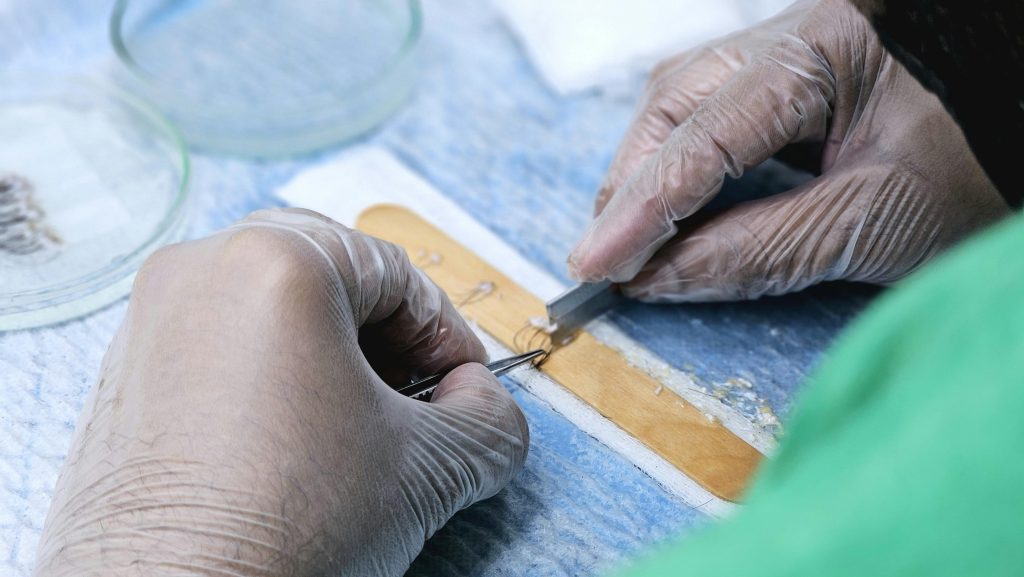Hair loss can be a distressing experience, impacting one’s confidence and self-image. For those seeking a permanent solution, hair transplantation has emerged as a popular and effective option. Delhi, with its world-class medical facilities and skilled surgeons, has become a hub for hair restoration procedures. However, embarking on this journey requires careful consideration and preparation. This comprehensive guide delves into the crucial aspects you need to be aware of when considering a hair transplant in the capital city.
The decision to undergo a hair transplant is significant, and being well-informed is key to achieving satisfactory results. From choosing the right clinic to understanding the procedure and post-operative care, there are numerous factors to consider. This article aims to provide you with a thorough understanding of what to expect and how to prepare for a hair transplant in Delhi, ensuring you make an informed decision and maximize your chances of success.
Understanding Hair Transplantation
Hair transplantation is a surgical procedure that involves relocating hair follicles from areas of dense growth (typically the back or sides of the head) to areas experiencing thinning or baldness. This technique capitalizes on the principle that certain hair follicles are genetically resistant to balding, making them ideal for transplantation.
The Science Behind Hair Growth
To fully appreciate the hair transplant process, it’s essential to understand the basics of hair growth. Hair grows in cycles, with each follicle going through phases of growth (anagen), regression (catagen), and rest (telogen). A successful transplant relies on the careful extraction and relocation of follicles in the anagen phase, ensuring they continue their growth cycle in the new location.
Types of Hair Transplant Procedures
There are primarily two techniques used in hair transplantation:
- Follicular Unit Transplantation (FUT): This method involves removing a strip of skin from the donor area and dissecting it into individual follicular units for transplantation.
- Follicular Unit Extraction (FUE): In this technique, individual follicular units are extracted directly from the donor area using a specialized tool.
Each method has its advantages and considerations, which we’ll explore in detail later in this article.
Advancements in Hair Transplant Technology
The field of hair transplantation has seen significant advancements in recent years. Innovations such as robotic-assisted FUE and platelet-rich plasma (PRP) therapy have enhanced the precision and effectiveness of these procedures. Delhi’s top clinics are often at the forefront of adopting these cutting-edge technologies, offering patients access to state-of-the-art treatments.
Choosing the Right Clinic in Delhi
Selecting the appropriate clinic is arguably the most crucial decision in your hair transplant journey. Delhi boasts numerous hair restoration centers, but not all are created equal. Here’s what you should consider:
Credentials and Expertise
Look for clinics with board-certified surgeons who specialize in hair transplantation. Check their qualifications, years of experience, and membership in professional organizations such as the International Society of Hair Restoration Surgery (ISHRS).
Technology and Techniques
Inquire about the techniques and technologies employed by the clinic. Leading centers in Delhi often offer both FUT and FUE methods, as well as advanced options like robotic-assisted procedures.
Before and After Portfolio
Request to see before and after photos of previous patients. This will give you a realistic idea of the results you can expect and the surgeon’s skill level.
Patient Reviews and Testimonials
Research patient reviews and testimonials. While online reviews can be helpful, be cautious of overly positive or negative feedback. Look for balanced, detailed accounts of patients’ experiences.
Consultation Process
A reputable clinic should offer a comprehensive consultation. This is your opportunity to discuss your concerns, ask questions, and understand the recommended treatment plan.
Facility Standards
Ensure the clinic adheres to strict hygiene and safety standards. The facility should be clean, well-equipped, and staffed with trained professionals.
Preparing for Your Hair Transplant
Once you’ve chosen a clinic, proper preparation is key to ensuring a smooth procedure and optimal results.
Medical Evaluation
Your surgeon will conduct a thorough medical evaluation to determine your suitability for the procedure. This may include:
- Scalp examination
- Hair loss pattern assessment
- Blood tests
- Review of medical history
Lifestyle Adjustments
In the weeks leading up to your transplant, you may need to make certain lifestyle changes:
- Quit smoking: Smoking can impair healing and affect graft survival.
- Avoid alcohol: Alcohol can increase bleeding during surgery.
- Adjust medications: Certain medications, particularly blood thinners, may need to be temporarily discontinued.
Scalp Care
Proper scalp care in the days before the procedure is essential:
- Avoid harsh chemical treatments
- Use gentle, surgeon-approved shampoos
- Refrain from using styling products
Nutritional Preparation
A balanced diet rich in vitamins and minerals can promote healing and hair growth. Consider incorporating:
- Protein-rich foods
- Fruits and vegetables high in vitamins A, C, and E
- Foods rich in biotin and omega-3 fatty acids
Mental Preparation
Understanding the emotional aspects of undergoing a hair transplant is crucial. Set realistic expectations and prepare yourself for the recovery process.
The Hair Transplant Procedure
Understanding what happens during the procedure can help alleviate anxiety and ensure you’re well-prepared.
Pre-Operative Steps
On the day of the procedure:
- Arrive with clean, dry hair
- Wear comfortable, button-down clothing
- Avoid caffeine and large meals
Anesthesia Administration
Local anesthesia is typically used to ensure your comfort during the procedure. Some patients may also receive mild sedation.
Donor Area Preparation
For FUT:
- A strip of scalp is surgically removed from the donor area
- The incision is closed with sutures
For FUE:
- Individual follicular units are extracted using a specialized tool
- No linear incision is made
Graft Preparation
Extracted follicles are carefully prepared for transplantation:
- Follicular units are separated and sorted
- Grafts are kept in a special solution to maintain viability
Recipient Site Creation
Tiny incisions are made in the balding areas to receive the grafts. The surgeon’s skill in creating these sites is crucial for achieving a natural-looking result.
Graft Placement
Grafts are meticulously placed into the recipient sites, considering:
- Natural hair growth patterns
- Appropriate density
- Angle and direction of hair growth
Procedure Duration
The length of the procedure depends on the number of grafts being transplanted. It can range from 4 to 8 hours or more.
Post-Operative Care and Recovery
Proper aftercare is essential for ensuring the success of your hair transplant and minimizing complications.
Immediate Post-Op Instructions
- Keep the head elevated for the first few nights
- Avoid touching or scratching the transplanted area
- Follow the prescribed medication regimen
Washing and Hygiene
Your surgeon will provide specific instructions on when and how to wash your hair. Typically:
- Gentle washing may begin 2-3 days after the procedure
- Use lukewarm water and mild, surgeon-approved shampoo
- Avoid direct water pressure on the grafts
Managing Discomfort
Some discomfort is normal in the days following the procedure. You may experience:
- Swelling
- Mild pain
- Itching
Your surgeon will prescribe appropriate pain relief and anti-inflammatory medications.
Activity Restrictions
To protect the newly transplanted grafts:
- Avoid strenuous physical activity for at least two weeks
- Refrain from swimming or submerging your head in water
- Protect your scalp from direct sunlight
Follow-Up Appointments
Regular follow-up visits are crucial for monitoring your progress and addressing any concerns. Typical follow-up schedule:
- First week post-op
- One month post-op
- Three months post-op
- Six months post-op
- One year post-op
Understanding the Hair Growth Timeline
Managing expectations regarding the growth of transplanted hair is important for patient satisfaction.
Immediate Post-Transplant Phase
- Transplanted hair may fall out within 2-3 weeks
- This is a normal part of the process and not cause for alarm
The Dormant Phase
- Little visible growth occurs for 3-4 months
- This is when the transplanted follicles are establishing themselves
Initial Growth Phase
- New hair growth typically begins around 4-6 months post-procedure
- Hair may appear fine and sparse initially
Continued Growth and Maturation
- Hair continues to thicken and grow over the next 6-12 months
- Final results are usually visible 12-18 months after the procedure
Potential Complications and How to Avoid Them
While hair transplantation is generally safe, being aware of potential complications can help you take preventive measures.
Infection
- Risk: Low when proper hygiene protocols are followed
- Prevention: Adhere strictly to post-operative care instructions
Scarring
- FUT may leave a linear scar in the donor area
- FUE typically results in minimal, dot-like scars
- Prevention: Choose an experienced surgeon and follow aftercare instructions
Unnatural-Looking Results
- Can occur if graft placement is not done skillfully
- Prevention: Select a reputable surgeon with a proven track record
Shock Loss
- Temporary loss of existing hair in the transplanted area
- Usually resolves on its own within a few months
Graft Failure
- A small percentage of transplanted grafts may not survive
- Prevention: Follow post-operative care instructions meticulously
Long-Term Hair Care and Maintenance
Maintaining your transplanted hair and preventing further loss is crucial for long-lasting results.
Ongoing Medical Treatments
- Minoxidil or Finasteride may be recommended to maintain results
- Discuss the benefits and potential side effects with your surgeon
Scalp Care Routine
- Use gentle, sulfate-free shampoos
- Avoid harsh chemical treatments for several months post-transplant
- Protect your scalp from excessive sun exposure
Nutritional Support
- Maintain a balanced diet rich in vitamins and minerals
- Consider supplements that support hair health, under medical guidance
Regular Check-ups
- Schedule annual check-ups with your hair restoration specialist
- Address any concerns about hair loss or transplant results promptly
Cost Considerations for Hair Transplants in Delhi
Understanding the financial aspects of hair transplantation can help you plan effectively.
Factors Affecting Cost
- Number of grafts required
- Technique used (FUT vs. FUE)
- Surgeon’s expertise and clinic reputation
- Additional treatments (e.g., PRP therapy)
Average Cost Range
- Costs in Delhi can vary widely, typically ranging from ₹30,000 to ₹2,00,000 or more
- Per graft costs usually fall between ₹30 to ₹100
Insurance Coverage
- Hair transplants are generally considered cosmetic and not covered by insurance
- Some clinics offer financing options or payment plans
Hidden Costs to Consider
- Post-operative medications
- Follow-up appointments
- Potential touch-up procedures
Choosing Between FUT and FUE
Understanding the differences between FUT and FUE can help you make an informed decision.
FUT (Follicular Unit Transplantation)
Pros:
- Allows for a large number of grafts in a single session
- Generally less expensive than FUE
Cons:
- Leaves a linear scar in the donor area
- Longer recovery time
FUE (Follicular Unit Extraction)
Pros:
- Minimal scarring
- Quicker recovery time
- Suitable for patients with short hairstyles
Cons:
- More time-consuming procedure
- Generally more expensive than FUT
Factors to Consider When Choosing
- Extent of hair loss
- Desired hairstyle
- Budget constraints
- Willingness to undergo multiple sessions
The Psychological Impact of Hair Restoration
Hair transplantation can have significant psychological benefits, but it’s important to approach it with realistic expectations.
Managing Expectations
- Understand that results take time to manifest
- Be prepared for the initial shock of post-operative appearance
Emotional Preparation
- Consider counseling or support groups for individuals undergoing hair restoration
- Discuss your motivations and expectations openly with your surgeon
Coping with the Waiting Period
- Focus on overall health and well-being during the recovery period
- Stay patient and trust the process
Embracing Your New Look
- Be prepared for changes in your appearance and how others perceive you
- Consider working with a stylist to make the most of your new hair
Alternatives to Hair Transplantation
While hair transplantation is effective, it’s not the only option for addressing hair loss.
Non-Surgical Treatments
- Minoxidil and Finasteride
- Low-level laser therapy
- Platelet-rich plasma (PRP) therapy
Scalp Micropigmentation
- A cosmetic tattoo procedure that creates the appearance of a fuller head of hair
Hair Systems and Wigs
- Modern hair systems offer a non-surgical alternative for extensive hair loss
Natural Remedies and Lifestyle Changes
- Stress reduction techniques
- Dietary changes and nutritional supplements
- Scalp massage and essential oils
Conclusion
Opting for a hair transplant in Delhi is a significant decision that requires careful consideration and preparation. By understanding the procedure, choosing the right clinic, and following proper pre and post-operative care, you can maximize your chances of achieving satisfactory results. Remember that hair restoration is a journey that requires patience and realistic expectations. With the right approach and expert guidance, you can regain not just your hair, but also your confidence and self-esteem.



